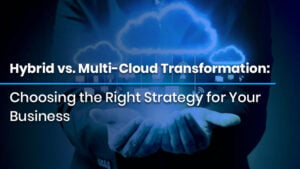Introduction
Like most other current cloud application development concepts, serverless and containers have been widely explored and discussed among developers. Some believe serverless began as an alternative to containerization, while others believe it can be used in conjunction with containers for application deployment. The distinction between serverless and containerization is not just about performance but also about longevity constraints, application scalability, and deployment time.
This article will compare the two technologies and see which one is superior. What are the common and distinguishing characteristics? Which one is best for which application scenario?
To learn cloud computing, containers, and serverless-based topics, IPSpecialist is the best place. Explore our Courses now!
What are Containers?
Containers enable applications to be packed, segregated from the underlying infrastructure, and delivered uniformly across several environments. Containers can be run on bare metal servers, cloud VMs, customized container instances, and managed services.
Container engines operate containers based on images that indicate which programs, configurations, and data should be included in the container. Containerized applications can be developed utilizing numerous container images. An application, for example, could be made up of a web server, application server, and database, each running in its container. However, they can be used in stateful applications by storing permanent data on an external storage medium.
Working of Containers
In technical terms, containers are a method of dividing a system or a server into separate user space environments, each of which runs only one program and has no interaction with the other partitioned sections of the machine. Each container shares the machine’s kernel (the kernel is the operating system’s foundation and communicates with the computer’s hardware), but each operates independently.

What is Serverless?
Serverless computing is a computing paradigm in which computing resources are managed in the background, allowing developers to focus on writing code that responds to specific events. This code is packaged as a serverless function that the serverless runtime can call as many times as it needs to serve incoming requests.
In a classic Infrastructure as a Service (IaaS) model, the cloud provider provides a virtual machine and charges for the time it is used, regardless of the applications that run on it. The customer is in charge of running the virtual machine, installing workloads, and scaling it up or down.
Benefits of Containers
- Containers are the best option if you need complete environmental control. Containers enable you to choose a root operating system, run software written in any language, and have complete control over the software and its dependencies. This makes it easier to move legacy applications to a container model.
- To get the best value from containerization, you need to run in a microservices paradigm. Split your application into distinct, self-contained services, each of which can be deployed as a container, and use a container orchestrator like Kubernetes to manage the cluster.
- Kubernetes has several valuable features, including auto-scaling, fault tolerance, storage, and networking management.
- Container orchestrators are challenging to set up and utilize, requiring specialist knowledge. Managing an extensive containerized application is a full-time job or multiple full-time occupations. Furthermore, expenditures can easily spiral out of control, especially when using the public cloud.
Use Cases
- Microservices architecture is built on the foundation of containers. Containers are ideal for constructing loosely linked microservices since they are portable, lightweight, and simple to deploy.
- DevOps teams can use containers to remove environment variances across development, testing, staging, and production deployments. As a result, they’re ideal for CI/CD workflows.
- The majority of current businesses work in hybrid and multi-cloud setups. Containers can execute applications on-premises or across several clouds, which is ideal for organizations.
- Legacy monolithic apps must frequently be converted to the cloud. This is made easier by containerizing them.
Benefits of Serverless
- If you need to execute relatively simple processing on streams of events, serverless is the way to go. It is simple to set up, even on a big scale, and you only pay for the time your serverless functions are in use. It is even better if the event source is a service hosted by the same cloud provider.
- There is no infrastructure to manage, unlike containerization. It would be best to be concerned about your code and its value to your company.
- However, there are certain restrictions in terms of vendor support and ecosystem dependencies. The programming languages and runtime environments that the serverless provider supports are limited, and there are a few ways to get past these limits.
- It is challenging to monitor and visualize how apps perform due to the infrastructure’s high abstraction. Like any other application, serverless apps have performance and stability concerns, and debugging and resolving these issues can be far more complex, putting production deployments at risk.
Use Cases
- REST APIs and GraphQL implementations, for example, are common serverless computing use cases. Serverless provides a strong framework for building API backends because API transactions are short-lived and can scale up and down fast.
- Serverless computing is ideal for teams handling and analyzing large amounts of data but not wanting to deal with infrastructure.
- Serverless computing allows IoT devices and external systems to communicate asynchronously in an event-driven and simple manner.
- Adding dynamic content and logic to static webpages is one of the textbook functions of serverless. AWS Lambda, for example, is frequently used to add dynamic functionality to a static S3 site.
Drawbacks in Serverless and Containers
Even if the application is not in use, at least one VM instance with containers is permanently active. Containers are, therefore, more expensive than serverless. While containers can grow relatively quickly in a shared system, subsequent scaling takes time because the machines must also be scaled. Using containers with orchestration systems like Kubernetes or AWS ECS can make scaling smarter.
The scariest aspect of serverless for most developers is vendor lock-in. When you go serverless, you are committing to a single cloud provider. The design of the serverless apps and APIs used in the functions varies per provider, making switching providers or switching to an on-premise solution potentially costly.
Differences Between Serverless Computing and Containers
The number of containers deployed in a container-based architecture is decided in advance by the developer. On the other hand, the backend automatically scales to meet demand in a serverless design.
To continue with the shipping container metaphor, a shipping company could try to predict an increase in demand for a product and ship more containers to the destination to meet that demand.
Containers are always running. Therefore, cloud providers must charge for server space even if no one utilizes the program.
Serverless architecture has no ongoing costs because application code only runs when it is called. Instead, developers are only charged for their application’s server capacity.
Containers are hosted on the cloud, but they are not updated or maintained by the cloud provider. Each container that developers deploy must be managed and updated.
Serverless architecture has no backend to manage from the developer’s perspective. The vendor handles all administration and software updates for the servers that run the code.
It is difficult to test serverless web applications because the backend environment is hard to replicate in a local environment. Containers, on the other hand, run the same regardless of location, making it relatively easy to test a container-based application before sending it to production.
How Should Developers Choose Between Serverless Architecture and Containers?
Developers that use a serverless architecture can quickly release and iterate new applications without worrying about scalability. Furthermore, the code does not need to be constantly running; serverless computing is more cost-effective than containers if an application does not get consistent traffic or utilization.
Containers give developers more control over their program’s environment and the languages and libraries used. Containers are particularly effective for transferring legacy programs to the cloud since they may more nearly emulate the application’s original running environment.
It is possible to employ a hybrid architecture with some serverless functions and some containerized functions. For example, suppose an application function requires more memory than the serverless vendor allots. If a function is too large, or if some but not all functions must be long-running, a hybrid architecture allows developers to benefit from serverless while still using containers for the functions that serverless cannot support.
In the Spirit of 2022
Most of the ongoing trends of DevOps, becoming serverless, or leveraging containers for application deployment appear to be a frequent subject of dispute among all-new generations on the block right now in 2022! And we still believe it will not end anytime soon in software development.
Conclusion
If your present application is extensive and on-premises, you may want to start by running it in containers and then gradually shift some of its components to functions. You can consider going serverless if you currently have a microservice-based application. Serverless architecture is well worth your time, mainly because of its low cost.








